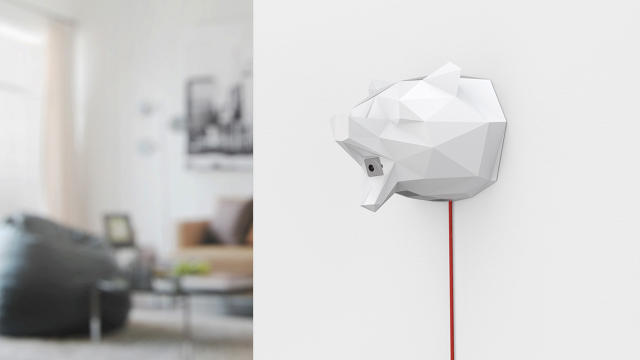This week in Las Vegas, thousands of new gadgets will see the light of day as part of CES, the annual Consumer Electronics Show. But a year or two from now, many of them, maybe most of them, will be nothing but trash: plastic shells filled with perfectly good electronic components, bulldozed into some landfill somewhere. And why? Perceived—or, perhaps, planned—obsolescence. This sort of wastefulness is the day-to-day fact of the consumer gadget business, and it's not too much to say it's almost apocalyptic in scope: when it comes to global climate change, there's a link between the poisonous smokestacks of Shenzhen, and observable effects like California's drought.
Ammunition is now putting design thinking to the task of addressing both problems. They've teamed up with Nascent to help design an innovative new platform of modular electronics which can easily bring almost any gadget to market within weeks, and which are as reusable as Lego. To prove the concept works, Ammunition used Nascent to create the Droppler, a little plinth of porcelain that sits by your sink and keeps track of your water usage with sound alone.

Founded by Baback Elmieh, Nascent is an attempt to cut down on the time it takes to bring consumer electronics to market, while also trying to eliminate waste. The core component of Nascent's platform is Nascent Objects, a series of Ammunition-designed electronic modules spanning the bulk of common gadget functionality. Conceptually, it's similar to Project Ara, Google's plan to make modular smartphones, but applied to consumer electronics: there's a CPU module, a camera module, a microphone module, a Bluetooth module, and so on. By tying these modules together with Nascent's software platform, you can easily turn them into practically any gadget.
Shapes is the other half of Nascent. Essentially, a Shape is a housing, which ties a collection of Objects together into a discrete gadget. Shapes are printed directly by Nascent, and contain all of the circuitry needed for Objects to communicate with each other when assembled. All together, Nascent addresses the "sweet spot," says Ammunition VP of product design Victoria Slaker, between maker and manufacturer: making it possible to design and even manufacture thousands of polished, consumer-grade gadgets within weeks, not months or years.
This brings us to the Droppler, Ammunition's water-monitoring gadget designed using Nascent Objects and housed in a porcelain Nascent Shape. Containing not much more than a microphone, a CPU, and an LED display, Droppler is meant to sit by your sink, eavesdropping on how much water it hears you using and then estimating where it thinks you are against your allowance. Unlike other water meters, it doesn't require a plumber to install. All you do is put it in your bathroom and Droppler does the rest.
Slaker is open about the fact that, like the Tim Cook-backed Nebia shower head, Droppler is yet another Silicon Valley solution to California's drought problem. But Nebia is another six months away from being delivered to early Kickstarter backers; water saving gadgets inspired by California's drought unveiled at this year's CES, meanwhile, could be another year or two away. Droppler, Slaker says, was designed within weeks. Meanwhile, Droppler, available for preorder on Indiegogo for $99 now, will be shipping to backers within weeks, and the entire design process only took a few weeks too. Which means, using Nascent, designers can quickly solve real-world problems with their gadgets, and get them to market in time to make a difference.

And as a bonus, if California's water problems somehow end up being solved, you don't have to throw it away. You can break the Droppler down and recombine its components into another gadget. Indiegogo backers will get kits to convert the Droppler into either a streaming video camera or Wi-Fi AirPlay speakers, but the whole idea of Nascent is that the Objects themselves are reusable. So by breaking down products into their Objects, consumers can use them like Lego to build entirely new gadgets, the plans for which they can download from a Thingiverse-like library.
Or that's the plan, at any rate. First, Nascent needs to take off, and people need to start using the platform to make things and ship them to customers. Once these gadgets are out there in the marketplace, DIY makers can break them down, and reuse their modules to potentially brainstorm a whole new generation of gadgets. That's why Ammunition partner Matt Rolandson says that he thinks Nascent, and products like Droppler, are "clearly the future we're headed for." After all, if design is going to be democratized, what could be more natural than democratizing manufacturing as well?